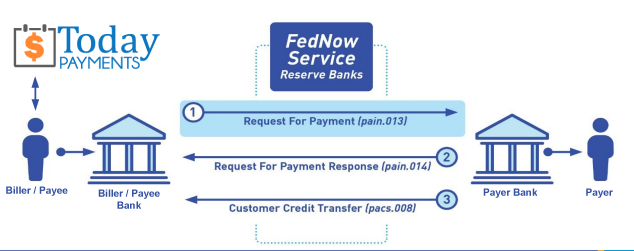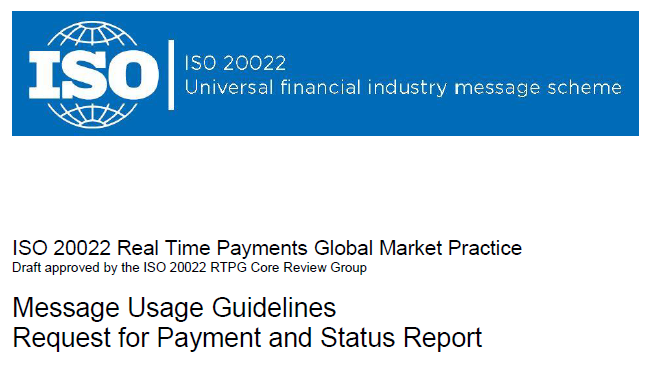Import FedNow File
TodayPayments.com is the go-to fintech platform for merchants needing fast, secure, and compliant real-time payments. Our Import FedNow® functionality simplifies real-time cash flow management through ISO 20022-based Excel, XML, and JSON file processing. Whether you're a small business or a high-risk merchant with multiple aliases, we deliver same-day funds with full reconciliation—all in one portal.
What is “Import FedNow®” and Why It Matters for Business Payments?
![]() Import FedNow® Real-Time Payments: Fast,
Secure, and Automated
Import FedNow® Real-Time Payments: Fast,
Secure, and Automated
Streamlining Real-Time Payments with
FedNow® Imports
In a fast-paced digital economy, businesses no
longer have the luxury of waiting days for payment settlement. The
solution? FedNow® Real-Time Payments with import
functionality that allows you to schedule and process
one-time, recurring, or batch payments across multiple banks—instantly.
Whether you’re uploading payment files in .Excel, .XML, or JSON or sending digital invoices with embedded Request-for-Payment (RfP) links, TodayPayments.com gives your business full control, real-time tracking, and financial certainty through ISO 20022-rich data messaging.
Import FedNow® is the smart way to move money across the Federal Reserve’s real-time payment rail, enabling:
- One-time payments
- Recurring payouts such as payroll, subscriptions, or supplier settlements
- to clients, vendors, or partners
- Batch uploads of hundreds of transactions with alias support
You can initiate RfP-based payments through:
- Mobile
- Texting (SMS)
- Email invoicing
- Embedded Hosted Payment Pages
And instead of relying on outdated methods like wire or ACH delays, your business benefits from certified “good funds” delivery in seconds.
ISO 20022 Messaging: Powering Rich Data and Instant Reconciliation
ISO 20022 is the industry standard for secure, interoperable financial messaging—and it’s the backbone of how we process your FedNow® imports.
Benefits include:
- Full invoice metadata with every transaction
- Real-time matching and reconciliation for accounting
- Embedded links to hosted invoices
- Alias-based routing using mobile phone numbers or email addresses
- Security and compliance across financial institutions
Whether you’re importing payment instructions from QuickBooks®, Excel, or a custom-built ERP, our platform ensures accuracy, speed, and compliance.
Key Features of FedNow® Imports via TodayPayments.com
- Instant Real-Time Settlement using FedNow® or RTP®
- Free FedNow® Application and Processing Portal
- Import in Excel, XML, or JSON Formats
- Hosted Payment Pages with embedded RfP links
- ISO 20022 Compliant RfP Messaging
- Alias Support for email and phone number payments
- Recurring Billing Options for rent, payroll, SaaS, etc.
- Mobile, Email, and SMS Delivery of payment requests
- QuickBooks® QBO Integration for automated sync
- Batch Uploads and Downloads for high-volume merchants
- Support for 100+ aliases or MIDs per business
- Bank Reconciliation Reports in Real-Time
- No Credit Checks, High-Risk Friendly Processing
- B2B, B2C, C2B, A2A Compatibility
✅ "FREE" Real-Time Payments Bank Reconciliation – with all merchants process with us.

To create an import request for a payment file (using CSV, XML, or JSON) into your financial institution for the FedNow system, you would need to structure the file according to the requirements of the FedNow API or system integration used by your institution. Here's a basic outline of how each format could be structured for such a request.
1. CSV Format
A CSV file typically contains records in a simple tabular format where each line represents a row. The FedNow system likely requires specific fields such as sender details, receiver details, transaction amount, and date.
Example CSV Structure:
csv
TransactionID, SenderAccount, ReceiverAccount, Amount, TransactionDate, Description
123456, 111111111, 222222222, 500.00, 2023-09-12, Payment for invoice 789
789123, 333333333, 444444444, 250.00, 2023-09-12, Payment for services rendered
This file can be imported via the FedNow hub after validation to ensure it complies with the specific CSV format expected by FedNow.
2. XML Format
XML is more structured and allows the transmission of more complex data. Below is a basic example of how the XML might look:
xml
<Payments>
<Payment>
<TransactionID>123456</TransactionID>
<SenderAccount>111111111</SenderAccount>
<ReceiverAccount>222222222</ReceiverAccount>
<Amount>500.00</Amount>
<TransactionDate>2023-09-12</TransactionDate>
<Description>Payment for invoice 789</Description>
</Payment>
<Payment>
<TransactionID>789123</TransactionID>
<SenderAccount>333333333</SenderAccount>
<ReceiverAccount>444444444</ReceiverAccount>
<Amount>250.00</Amount>
<TransactionDate>2023-09-12</TransactionDate>
<Description>Payment for services rendered</Description>
</Payment>
</Payments>
This XML structure would need to comply with FedNow’s payment schema.
3. JSON Format
JSON is widely used for API integrations due to its simplicity and readability. Here’s an example of how a JSON request could look:
json
{
"payments": [
{
"transactionID": "123456",
"senderAccount": "111111111",
"receiverAccount": "222222222",
"amount": 500.00,
"transactionDate": "2023-09-12",
"description": "Payment for invoice 789"
},
{
"transactionID": "789123",
"senderAccount": "333333333",
"receiverAccount": "444444444",
"amount": 250.00,
"transactionDate": "2023-09-12",
"description": "Payment for services rendered"
}
]
}
Steps for Importing the File:
- Validate the File: Ensure the file complies with FedNow’s specific requirements for the format and fields.
- Authentication: Depending on your institution's integration with FedNow, you'll need to authenticate to their hub (either through API keys, certificates, or other secure methods).
- File Upload: Use the file upload or API endpoint of your institution’s FedNow system. If using an API, the JSON or XML payload would typically be posted to a specific endpoint. For CSV, it might require a file upload through the institution's interface or API.
- Monitor Status: FedNow provides status updates on payment transactions, so once the file is uploaded, ensure you monitor the responses or logs for successful processing or errors.
Example API Call (for JSON/XML):
For JSON/XML, you may use a standard POST API call (specific to your financial institution):
POST /fednow/payment/import
Content-Type: application/json
Authorization: Bearer <YourAPIToken>
{
"payments": [...]
}
In this setup, you’ll provide the required data for payments, and the API will process it into FedNow.
You should check your institution’s documentation to verify the correct fields, format, and method for importing payment requests into FedNow.
Import. Instruct. Instantly Paid.
At TodayPayments.com, we believe in removing friction from financial workflows. Our FedNow® Import tools empower your business to:
✅ Upload payments
directly from Excel, XML, or JSON
✅ Send digital RfPs via mobile, email, or hosted invoice pages
✅ Accept secure, instant payments via FedNow®, RTP®, or ACH
✅ Manage multiple banks and aliases—all from one dashboard
✅ Track, reconcile, and automate every dollar in real-time
Apply now. No sign-up fees. No bank visits. Just fast, reliable payment processing with Import FedNow®—only at:
Creation Request for Payment Bank File
Call us, the .csv and or .xml Request for Payment (RfP) file you need while on your 1st phone call! We guarantee our reports work to your Bank and Credit Union. We were years ahead of competitors recognizing the benefits of RequestForPayment.com. We are not a Bank. Our function as a role as an "Accounting System" with Real-Time Payments to work with Billers / Payees to create the Request for Payment to upload the Biller's Bank online platform. U.S. Companies need help to learn the RfP message delivering their bank. Today Payments' ISO 20022 Payment Initiation (PAIN .013) shows how to implement Create Real-Time Payments Request for Payment File up front delivering a message from the Creditor (Payee) to it's bank. Most banks (FIs) will deliver the message Import and Batch files for their company depositors for both FedNow and Real-Time Payments (RtP). Once uploaded correctly, the Creditor's (Payee's) bank continues through a "Payment Hub", with messaging to the Debtor's (Payer's) bank.

... easily create Real-Time Payments RfP files. No risk. Test with your bank and delete "test" files before APPROVAL on your Bank's Online Payments Platform.
Today Payments is a leader in the evolution of immediate payments. We were years ahead of competitors recognizing the benefits of Same-Day ACH
and Real-Time Payments funding. Our business clients receive faster
availability of funds on deposited items and instant notification of
items presented for deposit all based on real-time activity.
Dedicated to providing superior customer service and
industry-leading technology.


1) Free ISO 20022 Request for Payment File Formats, for FedNow and Real-Time Payments (The Clearing House) .pdf for you manually create "Mandatory" (Mandatory data for completed file) fields, start at page 4, with "yellow" highlighting. $0.0 + No Support
2) We create .csv or .xml formatting using your Bank or Credit Union. Create Multiple Templates. Payer / Customer Routing Transit and Deposit Account Number may be required or Nickname, Alias to import with your bank. You can upload or "key data" into our software for File Creation of "Mandatory" general file.
Fees = $57 monthly, including Support Fees and Batch Fee, Monthly Fee, User Fee, Additional Payment Method on "Hosted Payment Page" (Request for file with an HTML link per transaction to "Hosted Payment Page" with ancillary payment methods of FedNow, RTP, ACH, Cards and many more!) + $.03 per Transaction + 1% percentage on gross dollar file,
3) We add a URI for each separate Payer transaction. Using URI, per transaction, will identify and reconcile your Accounts Receivable.
Fees Above 2) plus $29 monthly additional QuickBooks Online "QBO" formatting, and "Hosted Payment Page" and WYSIWYG
4) Above 3) plus Create "Total" (over 600 Mandatory, Conditional & Optional fields of all ISO 20022 Pain .013) Price on quote.
Each day, thousands of businesses around the country are turning their transactions into profit with real-time payment solutions like ours.
Start using our Bank Reconciliation and Aging of Request for Payments:
Dynamic integrated with FedNow & Real-Time Payments (RtP) Bank Reconciliation: Accrual / Cash / QBO - Undeposited Funds
Contact Us for Request For Payment payment processing

